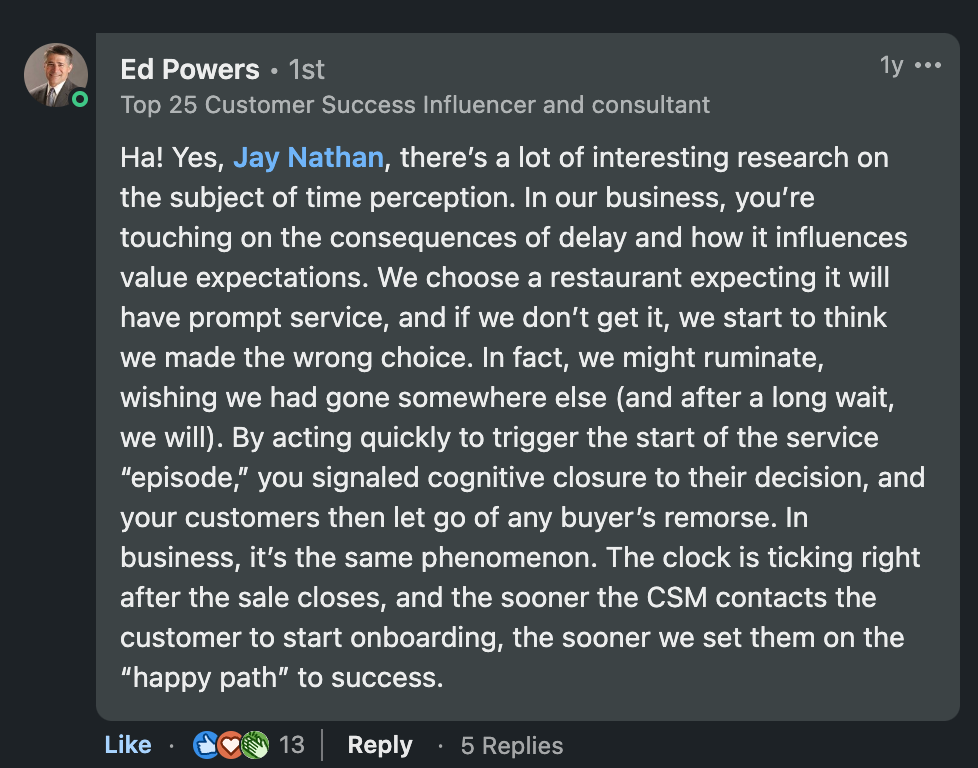Every minute feels like two.
The first lesson I was taught about waiting tables is that once seated, every minute a customer spends waiting for a server to greet them feels like two.
Armed with this knowledge, I made it a point to greet each of my tables as fast as possible, even if I couldn’t immediately take drink orders or explain the menu.
“Hi, my name is Jay. I’ll be with you in just a few moments.”
This simple phrase was usually all it took.
But without this step, the customer assumed the worst-case scenarios:
“Do they even know we’re here?”
“Did they forget about us?”
“Did we make the right decision coming to this restaurant?”
Without information, we all tend to create our own narratives about what’s happening in a given situation.
This got me thinking, where are the places in the SaaS customer journey where this could happen?
Connecting with a lead who wants to see a demoKicking off onboarding for a new customerResponding to a support case submissionProviding feedback on product enhancement requests, and so on…
The feedback loop around these interactions is critical to reducing the stress on the customer trying to get something done.
My friend, Ed Powers, explained it well (as he often does) in response to my original post on this topic:
By acting quickly to trigger the start of the service “episode,” you signaled cognitive closer on their [buying] decision, and your customers then let go of any buyer’s remorse.
Here’s Ed’s full comment:
Ed Powers explains time perception and cognitive closure.
Better, faster communication improves the customer experience measurably.
It also reduces the need for customers to follow up and check back on requests, which keeps customer effort low.
It would be easy to assume that we need to ask our people to work harder, follow up faster, and be more empathetic when working with customers.
But this, on its own, isn’t a sustainable solution.
This type of customer-centricity is process driven, i.e., designed into core processes.
Critical communications are automated, quality and timeliness KPIs appear on managerial reports, and our systems quickly escalate exceptions to team leads to resolve.
Process-driven customer centricity is scalable and reinforces the ultimate question on every customer’s mind with each interaction: Am I making the right decision by continuing to work with this vendor?
✌️
💡 Weekly Favorites
Here are some of my favorite podcasts, blogs, and videos from the week:
Usage-based pricing isn’t always best; When not to make consumption your primary pricing metric. Usage-based pricing is excellent until it’s not.From my friend Sheik Ayube, How long does it actually take to build a customer success organization? It turns out, you guessed… it depends.A tale of Three Companies: The Venture Capital Efficiency Ratio and What it Means to be Capital Efficient. Written two years ago, this piece hints at the reality we all now face: the era of growth at all costs has ended.
Enjoy, and I’ll see you next week.
Do you want to share this issue of customersuccess.io via text, social media, or email? Just copy and paste this link: www.customersuccess.io/psychology-of-waiting/

